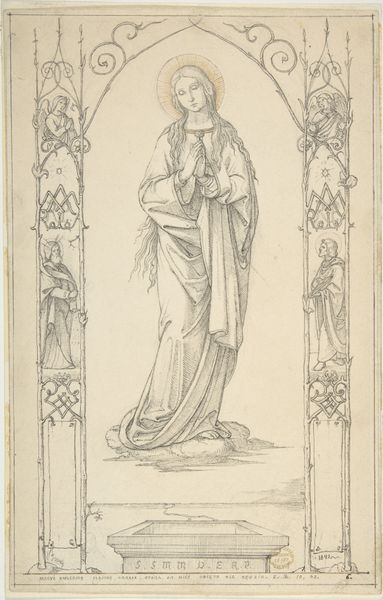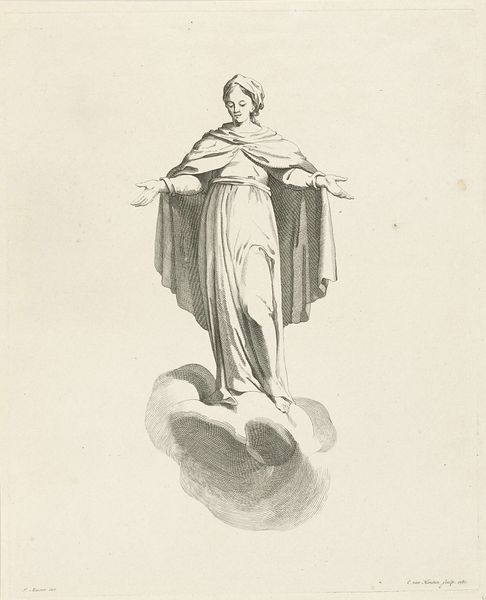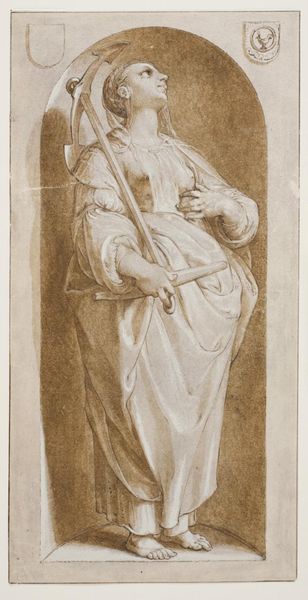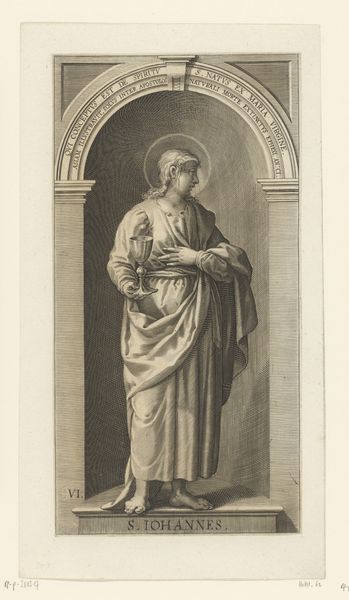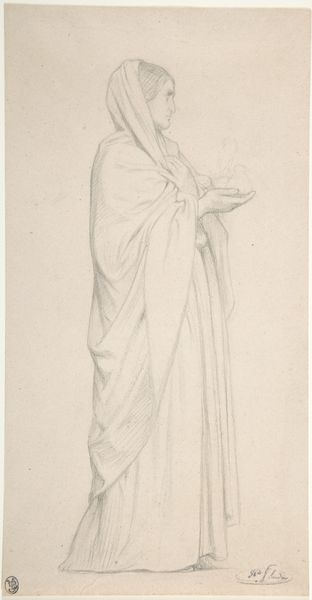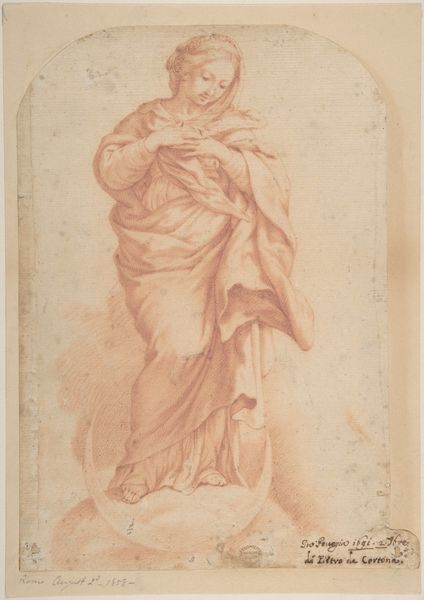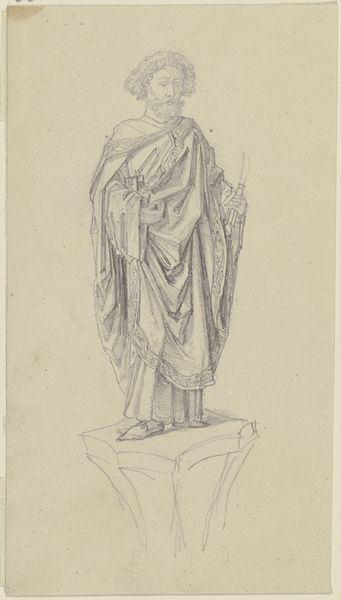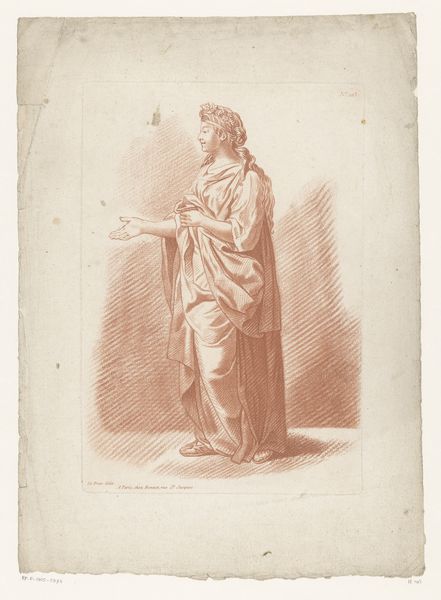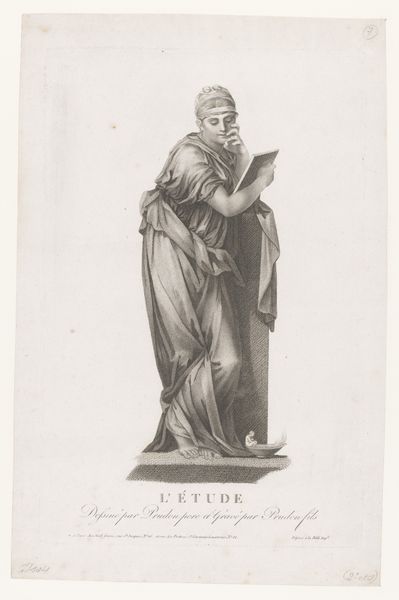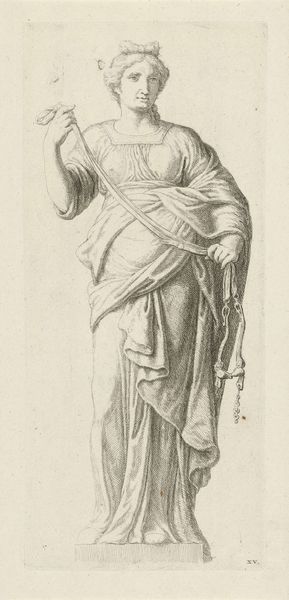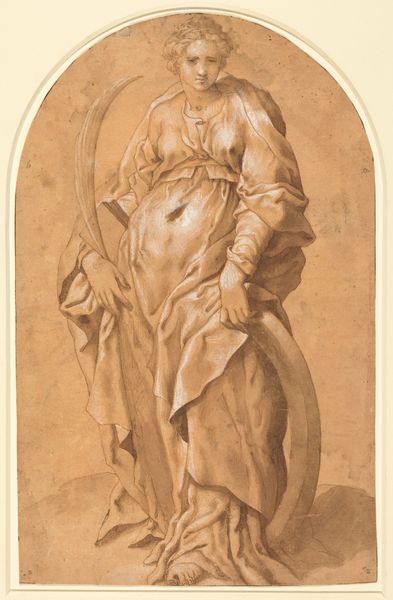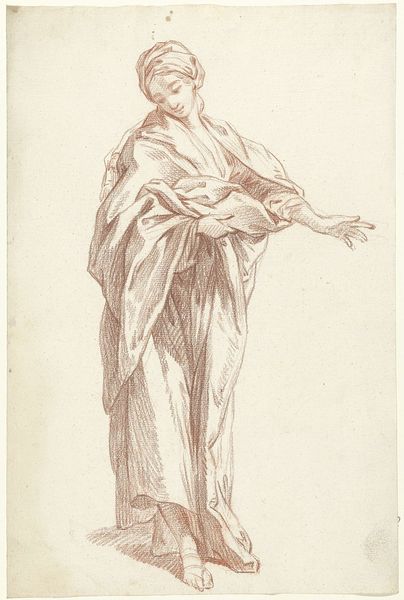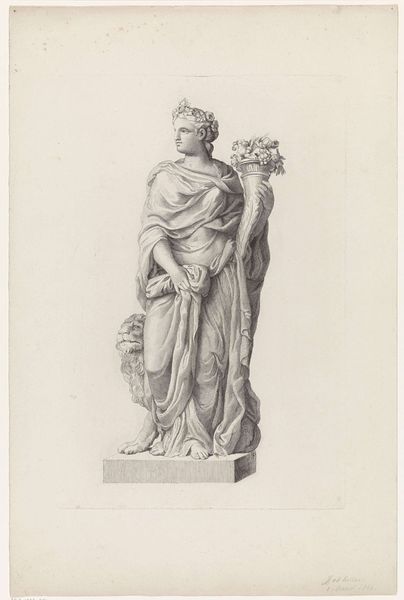
#
pencil drawn
#
amateur sketch
#
imaginative character sketch
#
light pencil work
#
pencil sketch
#
incomplete sketchy
#
pencil drawing
#
portrait drawing
#
pencil work
#
fantasy sketch
Dimensions: height 522 mm, width 358 mm
Copyright: Rijks Museum: Open Domain
Bernard Romain Julien created this delicate lithograph, Hemelvaart van Maria, using a stone matrix and greasy crayon. This printmaking technique, developed in the late 18th century, allowed for relatively quick and inexpensive reproduction of images, contributing to a boom in visual culture. Here, we see the Virgin Mary rendered in subtle gradations of tone, achieved by varying the pressure on the lithographic crayon. The resulting print mimics the appearance of a chalk or pencil drawing, a quality Julien surely intended, given his background as a celebrated sculptor. The lithographic process mediates the graphic nature of the work, which is critical in the production of aesthetic qualities like tone and depth. Consider the implications of this reproductive medium. Lithography democratized image-making, making art accessible to a wider audience. Yet, it also transformed the artist's role, shifting emphasis from unique creation to mass production. By understanding the means of production, we gain insight into the social and cultural forces that shaped this seemingly straightforward religious image.
Comments
No comments
Be the first to comment and join the conversation on the ultimate creative platform.
